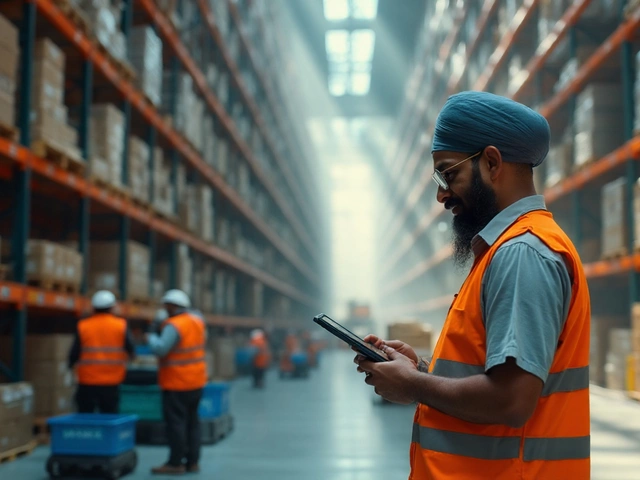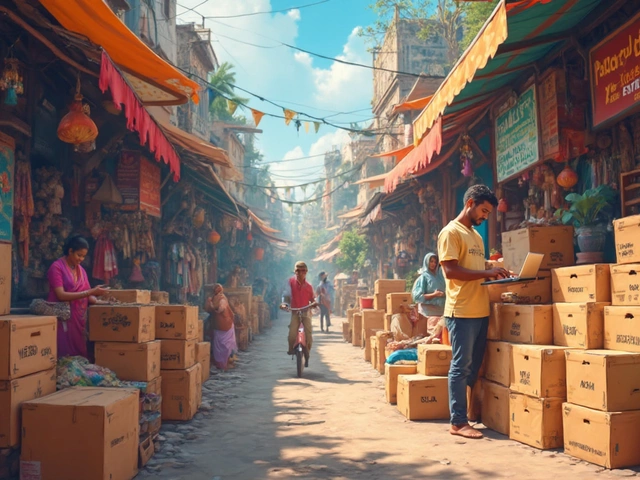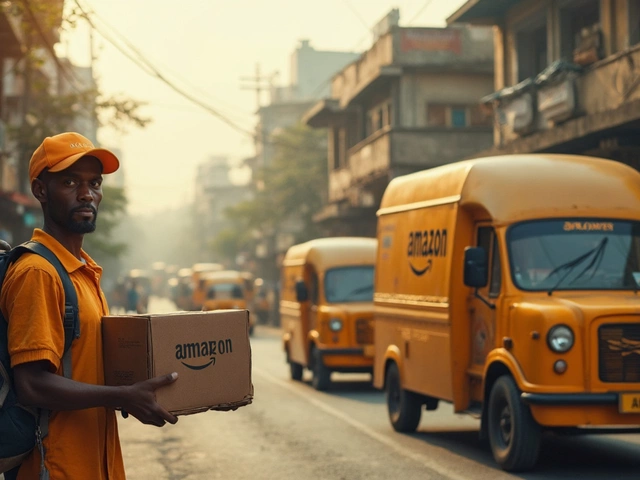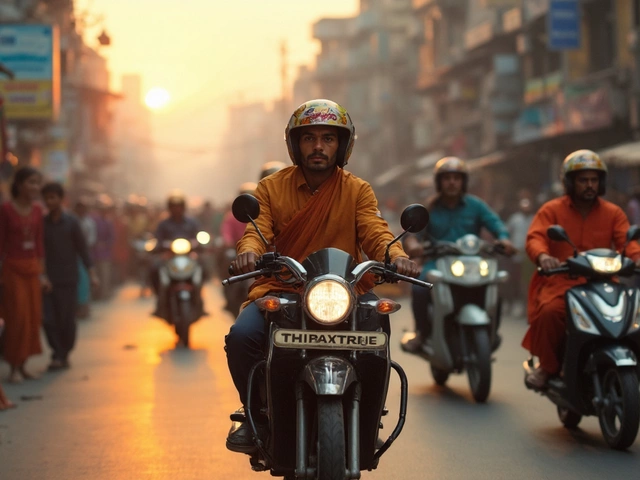Ever got excited to order something online, only to see that heartbreaking message, “Sorry, we don’t deliver to your area”? That sting is real. But there’s more to this behind-the-scenes delivery game than a simple yes or no. The strange thing is, almost nobody talks about delivery coverage until it’s suddenly a problem. If you rely on food delivery apps, buy groceries online, or order big stuff like TVs straight to your door, you’re living and breathing delivery coverage—most people just don’t realize it.
What Does Delivery Coverage Actually Mean?
Let’s break it down. Delivery coverage, in plain English, is the area where a company will send its products or services to your doorstep. It can mean the neighborhoods a pizza spot is willing to drive to, the places where Amazon drivers roam daily, or the towns a grocery chain will serve with online orders. The range of coverage decides who gets fast, easy delivery—and who’s left driving all the way to the store. No two businesses have the same delivery reach. Some zip codes can order everything from hot coffee to couch sets. Rural places might not even get basics like next-day parcels.
What makes it even weirder is that delivery coverage is always changing. New roads open up, local laws change, and tech improves. Suddenly, your neighborhood goes from “out of range” to “now eligible!” Stores pull back when delivery is too costly or unreliable. Services like DoorDash and Instacart use clever mapping and real-time driver apps to stretch their reach, but it’s still a numbers game—it all comes down to distance, demand, and dollars.
Here’s a fun fact: Way back in the early days of pizza delivery, most local shops wouldn’t drive more than two miles from their kitchens. That’s because cold pizza equals angry customers. Now? Some places use insulated ovens in the car, or team up with third-party fleets, so they can offer delivery eight, ten, even fifteen miles out—changing who gets dinner to their doorstep.
There are some classic reasons why coverage might be limited. Geography plays a big role: winding country roads, lakes, or highway barriers can mess with coverage maps. Then there’s driver availability—no drivers nearby, no delivery for you. For some online retailers, it boils down to cost: shipping a sofa fifty miles out of town often isn’t worth the time or fuel. Weather can shake things up too. Some companies shrink their delivery area on snowy days, or during huge storms, because safety comes first.
One thing most people don’t realize is that many sites check your address before you even start shopping. If you’ve ever wondered why you’re asked for your address upfront, it’s to match you with the products, restaurants, and services in your coverage zone. Some companies use something called a delivery radius—a simple circle drawn on a map from their location. Others rely on sophisticated software that checks block-by-block for traffic, weather, and real-time driver data.
Here’s a quick comparison of delivery models:
| Business Type | Coverage Approach | Typical Range |
|---|---|---|
| Local Pizza Shop | Radius from Store | 1-5 miles |
| Online Grocer | Delivery Zones by ZIP Code | 10-30 miles |
| National Retailer (like Amazon) | Regional & Nationwide | 50+ miles, sometimes unlimited |
| Meal Delivery App | Real-Time GIS Mapping | 2-8 miles, traffic-dependent |
So, whether your favorite spot delivers or not isn’t personal—it’s usually about logistics and tech. And when the system works, it feels like magic. Miss the delivery zone by half a street? Too bad, but now you know why.
Why Delivery Coverage Exists: The Real Reasons Behind Delivery Zones
If you’ve ever cursed your luck because the hot new food place won’t deliver to you, there’s a story behind it. Delivery zones aren’t drawn to annoy you—they’re designed for speed, quality, and cost. Think about the dinner rush: If a sushi spot says yes to every order, food gets cold, staff gets overwhelmed, and the entire service drops. Smaller, well-mapped coverage keeps drivers sane and customers happy.
There’s another piece—shipping costs. In the world of e-commerce, fuel, driver wages, and vehicle expenses all stack up fast. Companies run the numbers behind every possible delivery. If serving you means burning an extra $10 in gas for a $15 sale, your town might be left out of coverage. Retailers often use software to predict delivery costs right down to the street. Some towns get “priority” zones for fast delivery (think prime shipping), while others get only the basics, if anything at all.
Fairness comes into play, too. Some communities, especially in remote or lower-income areas, have been left underserved. During the pandemic, tons of headlines popped up about “delivery deserts”—places overlooked by major delivery networks, even when demand was crazy high. Some cities have pushed for laws to stop “postcode discrimination.” Did you know one London study in 2024 found 17% of neighborhoods couldn’t get grocery or meal delivery during peak lockdown times?
Insurance is another wild card most folks never consider. Some delivery drivers or companies need extra insurance to go into certain areas, especially if routes are long or high risk. That can limit coverage, even in big metro zones.
Technology keeps moving the goalposts. DoorDash, Uber Eats, and others now use live driver data, traffic analytics, and AI-powered routing to update their coverage areas every few hours. If demand spikes in a certain spot, the coverage zone might stretch further for that night—then shrink back as drivers get busy elsewhere. That’s why, if you ever notice you can order for delivery some nights but not others, it’s because the invisible “delivery wall” moves as conditions change.
Businesses constantly measure their on-time rates, driver wait times, and food quality scores. Bad reviews about late or ruined deliveries can hurt their online reputation. Tight coverage zones help them keep those numbers healthy. So when your area isn’t included, it’s usually about protecting their brand as much as saving money.
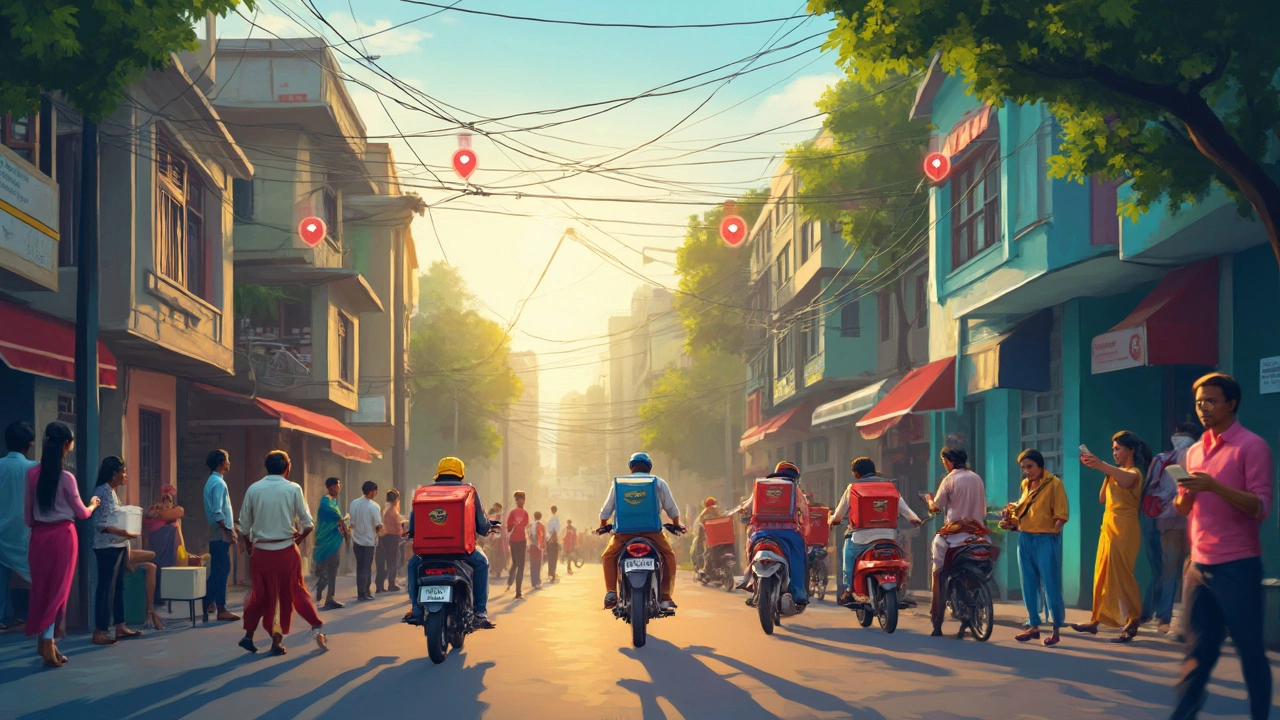
How to Know If You’re In the Delivery Coverage Area
Getting answers here should be easy, but the process can feel messy. Not every company lets you check coverage without creating an account. Some make you add your address first, while others don’t reveal limited coverage until you try to check out—which is frustrating, to say the least.
Most big sites have a “check your ZIP code” box on their front page. Plugging in your zip will instantly show what’s available. Food delivery apps usually ask for your address right away and update restaurant choices on the fly, hiding anything out of reach. Some grocery sites add a banner or warning about coverage, like “We do not deliver to this address yet.” Smaller businesses or specialty sites might make you reach out by chat or phone to find out.
Here’s one trick: Try putting in a neighbor’s address if you’re right on the edge of a coverage zone. Sometimes just being a block away makes all the difference. Another tip—if you work nearby and your workplace is in a coverage zone, you might use that address for daytime deliveries.
- If you want to know if your favorite service delivers to you, use their online checker before filling your cart.
- Look for new businesses moving in; sometimes coverage expands when competitors launch nearby.
- If you can’t get delivery, consider pickup—most apps let you order ahead and swing by when it’s ready.
Mistakes do happen. Occasionally, coverage maps don’t update as they should, leading to rejected orders even if you “should” be eligible. In that case, reaching out to customer service is worth a shot—they might correct the error or give you a workaround. And yes, sometimes boundaries change based on time of day, weather, or staff levels.
For folks in new developments, expect delivery coverage issues early on—mapping software often lags behind actual growth, so your shiny new street might not register for months. Reporting missing streets to both the delivery company and Google Maps can help speed things up.
If you’re moving soon, make “Can I get delivery?” part of your new address checklist. It’s no joke—talk to real estate agents or locals to get an idea of your food and parcel options. Fast delivery can be a make-or-break factor for lots of folks deciding where to live, especially folks who rely on online services for daily needs.
Tips for Expanding Delivery Coverage and Getting the Most from Your Orders
If you’re tired of being stuck outside the delivery bubble, you don’t just have to wait and hope. Here are some ideas folks have used to get around limits or encourage better delivery in their neighborhoods:
- Team Up With Neighbors: Some businesses will open new delivery zones if they get enough requests. Rally your street to show there’s real demand. You can start a petition or send a joint email—strength in numbers really works here.
- Special Delivery Windows: Offer to accept deliveries during less busy hours when companies can spare a driver to go out of their usual zone. Sometimes calling a local business and asking for a late lunch or early dinner slot can do the trick.
- Pick-Up and Drop-Off Points: Some businesses use locked drop boxes or designated spots at local stores, so they can deliver to one easy location in a coverage gap. See if this exists in your area—you might pick up your parcel at a nearby pharmacy or partner business.
- Meet Delivery Drivers: In rare cases, you can ask to meet drivers at a spot just inside the coverage area—it’s not common, but some folks coordinate at shopping centers or parks to bridge that last-mile gap.
- Suggest Coverage Expansion: Reach out to customer service or social media, and let the company know you want coverage. Larger companies track these requests for planning updates.
- Tip Generously & Leave Reviews: For the drivers who do trek out your way, tips and good reviews encourage repeat service and might influence bosses when they update the maps.
If you own or run a small business, tooling up your delivery system is easier than it used to be. Plenty of tech platforms will help you map coverage, set fair radius limits, and even pool deliveries to remote spots to save money. There are even on-demand software tools that calculate the best new delivery zones based on real-world orders. For startups, starting small—with tight, reliable coverage—often gets better customer loyalty than over-promising and struggling to keep up.
Here’s a handful of recent stats on delivery coverage in North America (2024 data):
| Type of Delivery | Percent of Urban ZIPs Covered | Percent of Rural ZIPs Covered |
|---|---|---|
| Meal Delivery Apps | 94% | 54% |
| Online Grocery Delivery | 86% | 42% |
| Parcel/Package Delivery | 99% | 88% |
So, next time you’re frustrated by delivery limits, remember there’s a wild system of logistics, tech, policy, and even community requests steering every delivery map. Some neighborhoods win big because they’re close, dense, or have lots of demand—but maps can and do change. Don’t be shy about asking for coverage, teaming up with neighbors, or checking the latest options. Delivery coverage isn’t just a boring company policy—it’s gatekeeper to whether your next meal, gadget, or package lands on your porch or you’re left running errands yourself.


